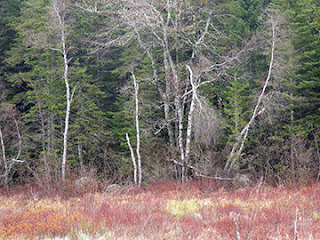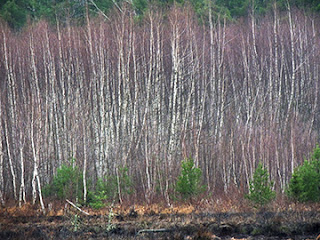Walking the old carriage roads at World's End in Hingham Massachusetts, the rolling hills and the lines of trees presented several arresting images. The relationship of the clouds and sky patterns in relation to the trees created striking dynamics in the images. The feathery birches were of particular visual interest.
We were always surrounded by water in walking the carriage roads, with views of the distant skyline of Boston.
Theses isolated small trees seemed to have a conversation with themselves.

































